Detailed Porsche Taycan Review – Interior Edition
公開日:2019.12.18
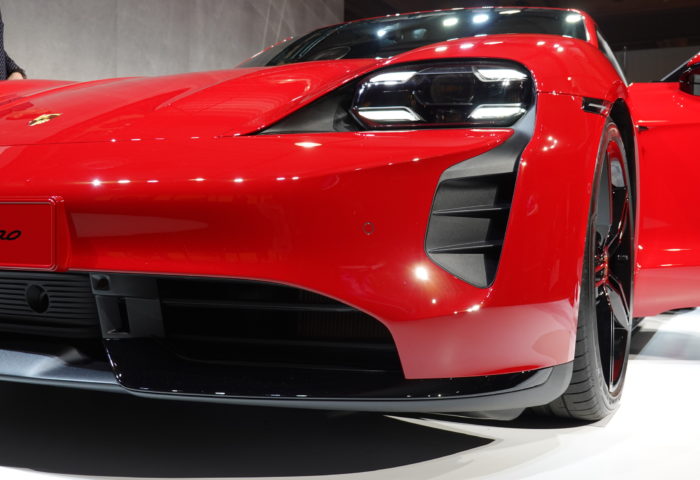
Recently, I wrote a detailed article on the Taycan’s preview event focusing on the exterior and design, and now I’m excited to bring you the second part of that series.
Taycan / Interior
The Taycan’s interior was designed from scratch with the keywords “digital, clear, and sustainable (environmentally sustainable)” in mind.
Instrument Cluster / Center Console
The horizontal (horizon-like) design of the instrument cluster is striking and is said to evoke the driver-focused layout of the original 911’s gauges.
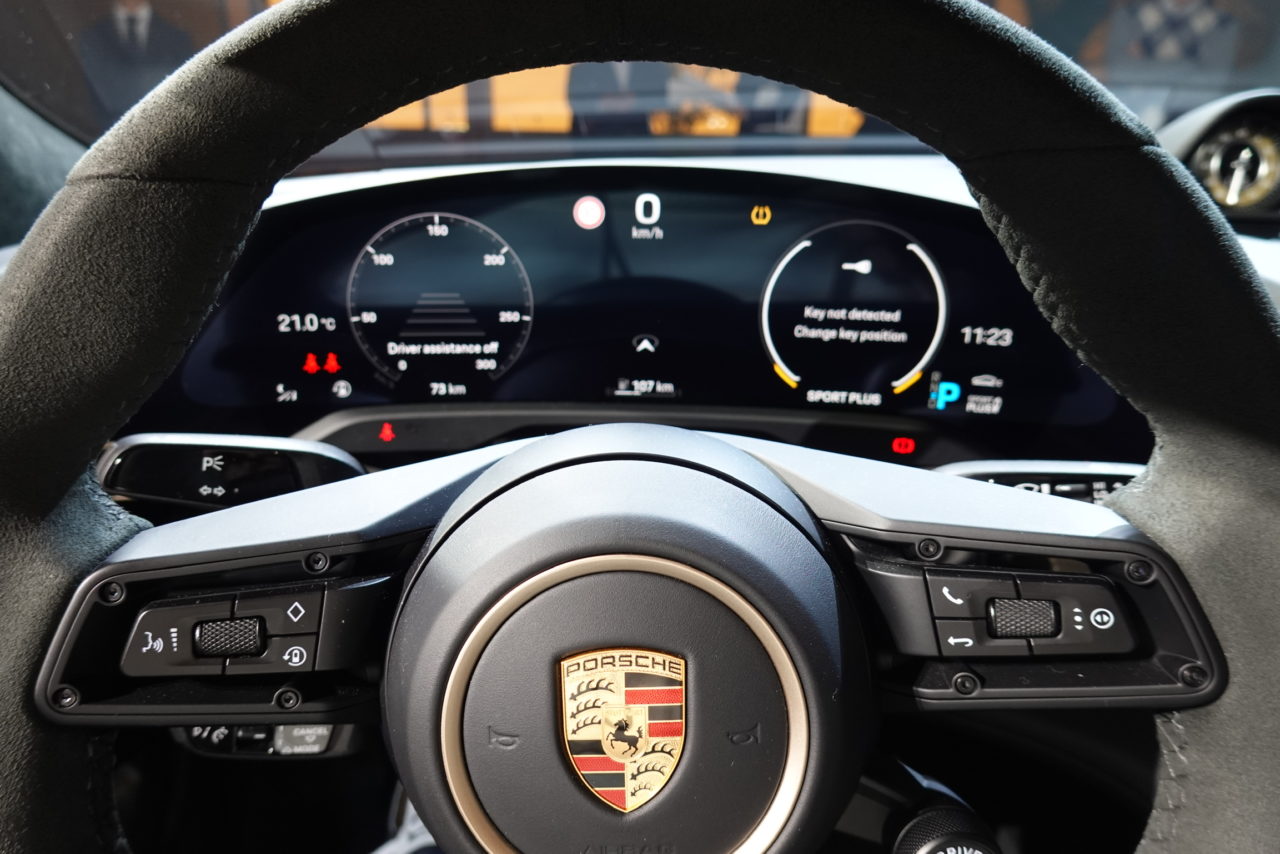
Once inside, I felt it was “classic Porsche at the steering wheel, but fully digital in the instrument cluster”, which gave a unique impression. The large central speed display is very easy to read, which is a nice touch.
The steering wheel on the display model was the “basic version,” but you can also opt for the GT Sport Steering Wheel. Personally, I prefer the GT Sport Steering Wheel.
If you add the Sport Chrono Package, mode changes are controlled by the familiar dial on the steering wheel, just like in other Porsches.
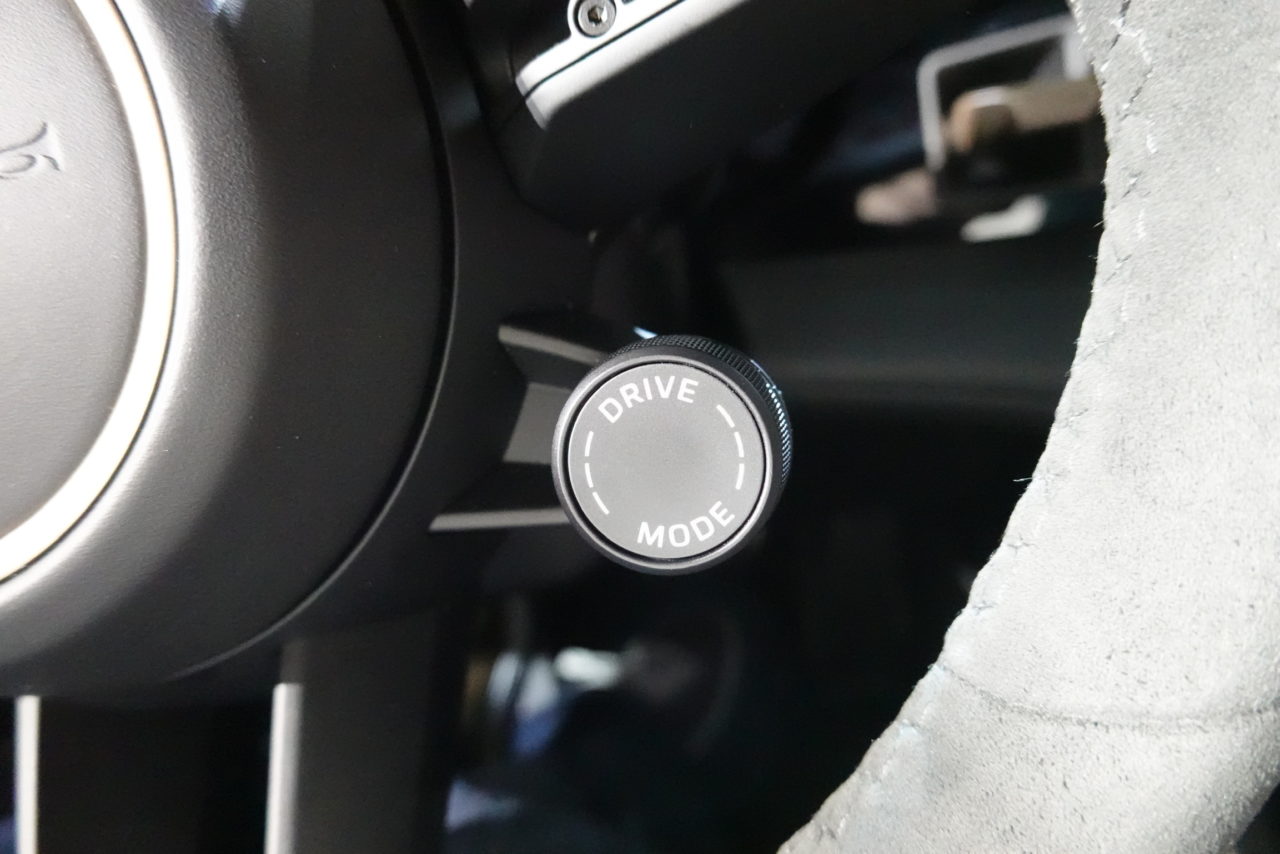
The center console is very clean and minimalist, featuring a display beneath the touch panel and air vents that looks like an iPad.
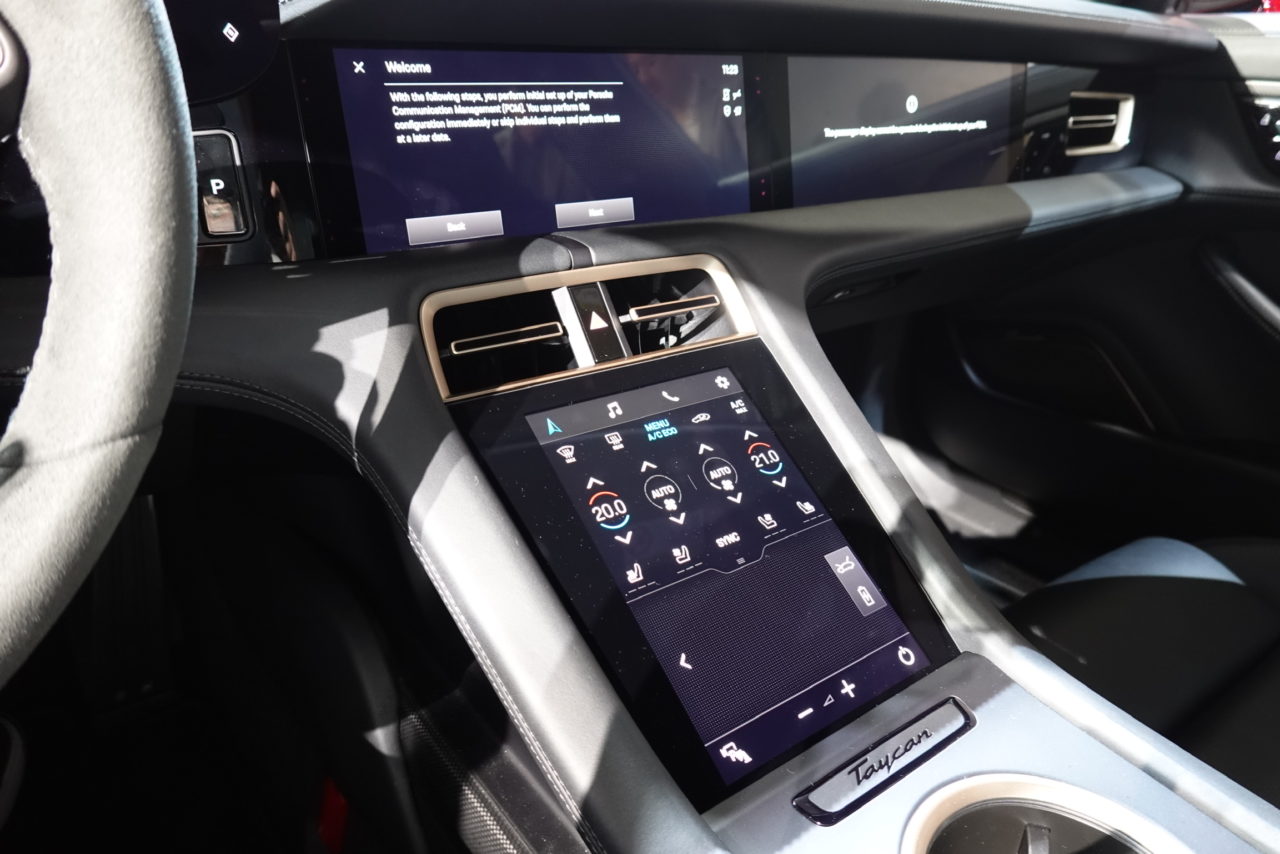
There are almost no buttons; everything is operated by touch, just like on a smartphone or tablet. For example, you can adjust the air conditioning temperature by tapping the up/down display or by swiping—just like on a smartphone.
According to Alex, “I think the touch panel controls are even easier to use than those in the Panamera.”
Additionally, the Taycan offers an option to install a display on the passenger side, allowing the passenger to control navigation and other settings.
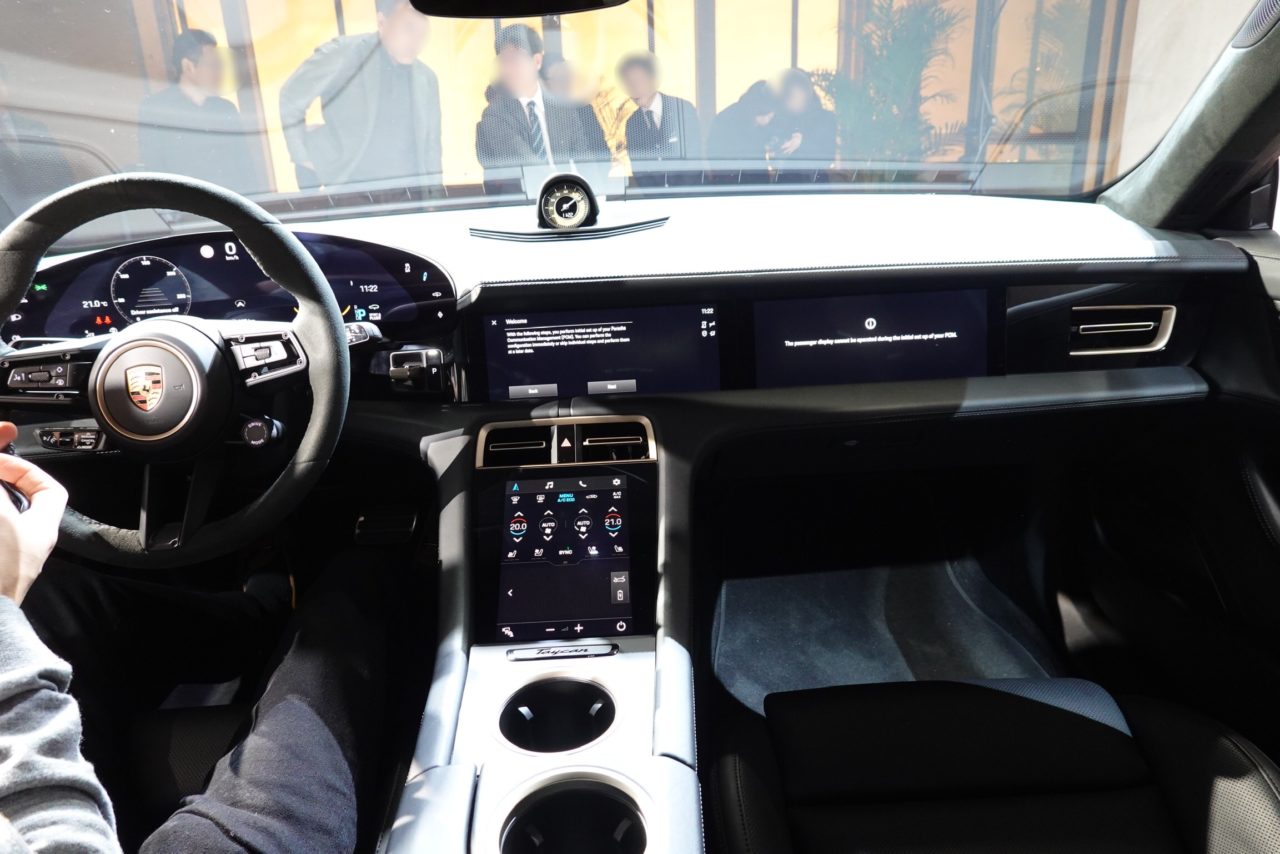
Also, when you open the cup holder section in the center, there’s a small storage space inside with USB ports. I wonder if this is an optional feature.
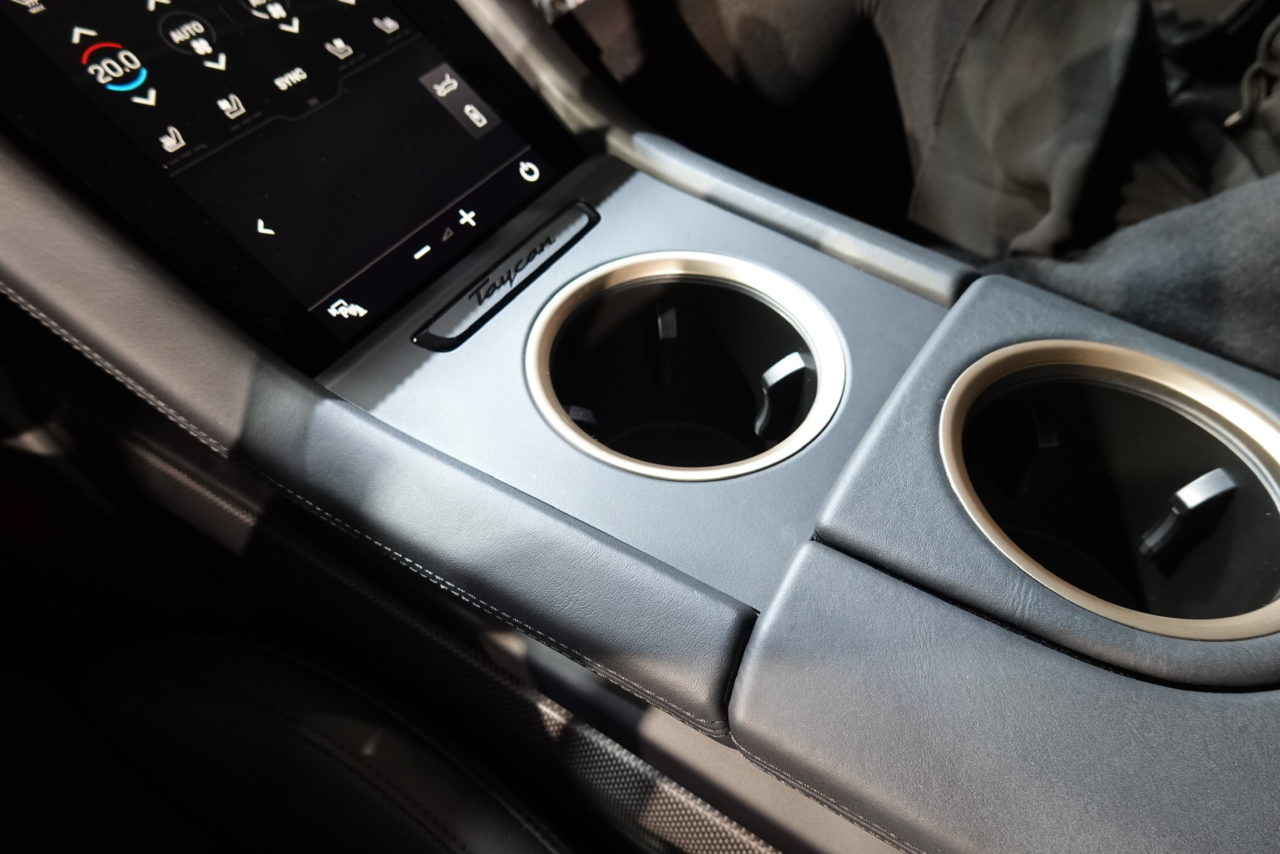
Seats / Materials
The Taycan is an electric vehicle developed and manufactured with the goal of being carbon neutral (meaning the amount of CO2 emitted equals the amount absorbed in its lifecycle). It is built at Porsche’s factory in Stuttgart, where the roof is planted with greenery and renewable energy is used, ensuring environmental considerations throughout the entire production process.
In line with this, the Taycan is the first Porsche to offer a leather-free interior option. The seats use “OLEA,” a club leather made from olive leaves.

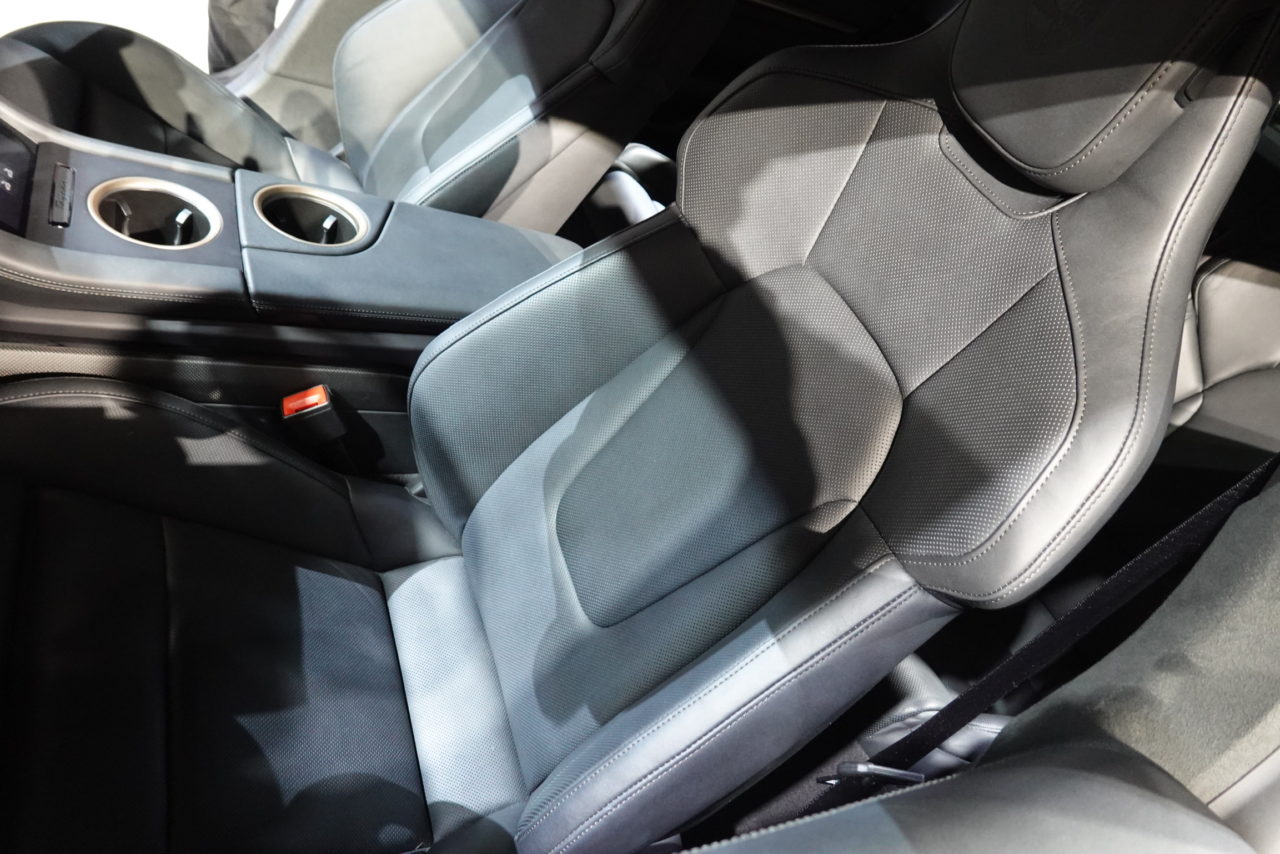
The floor uses ECONYL, a 100% recycled nylon fiber. ECONYL is a well-known material also used by Prada and Adidas.

The material that looks like Alcantara is actually “Race-Tec,” which reduces CO2 emissions by 80% compared to conventional materials. Truly fitting for an EV and sustainable design.
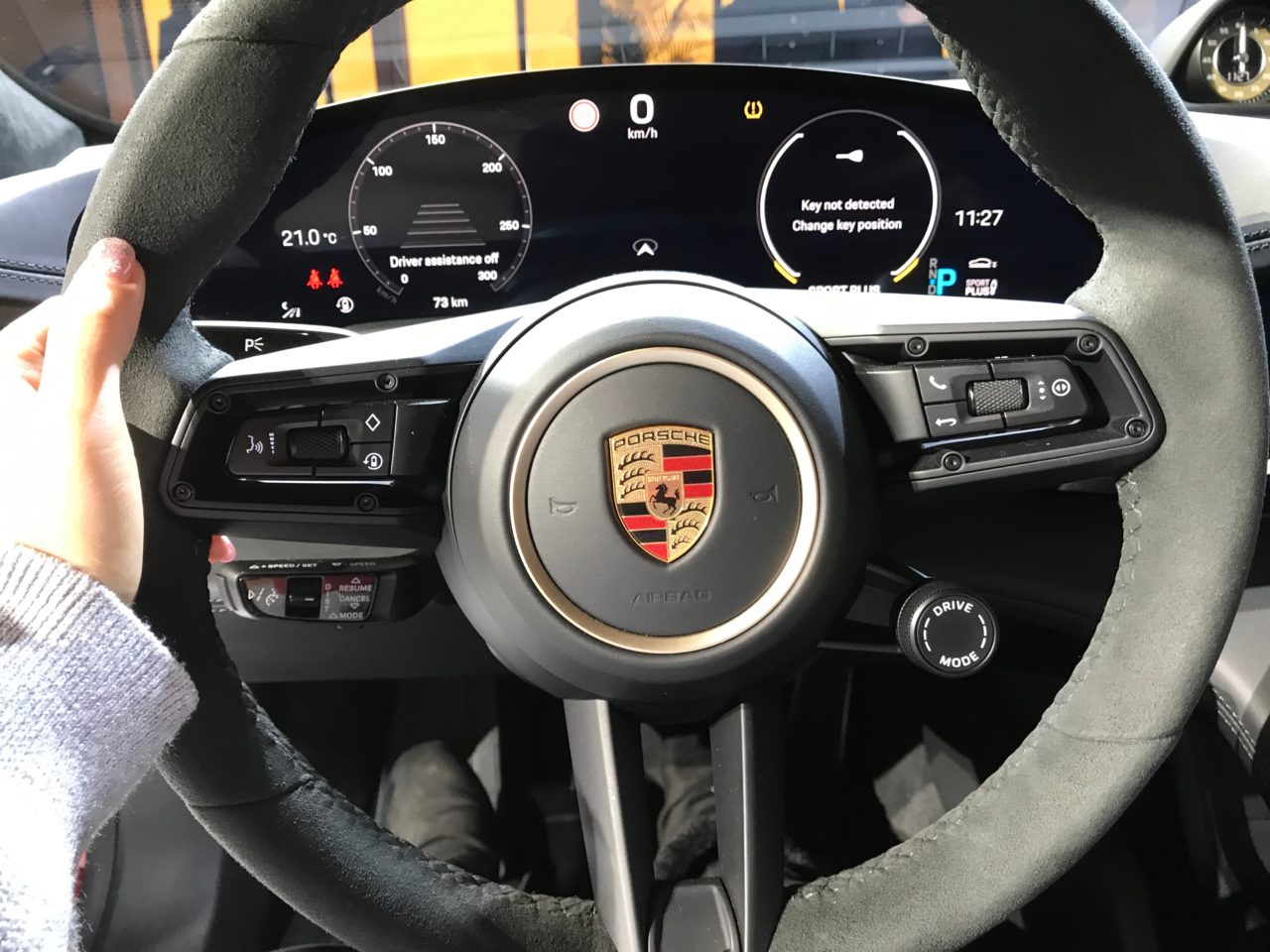
Despite using these materials, the high-quality feel is impressively maintained.
Accent Package
Gold accents are found throughout the Taycan’s interior.
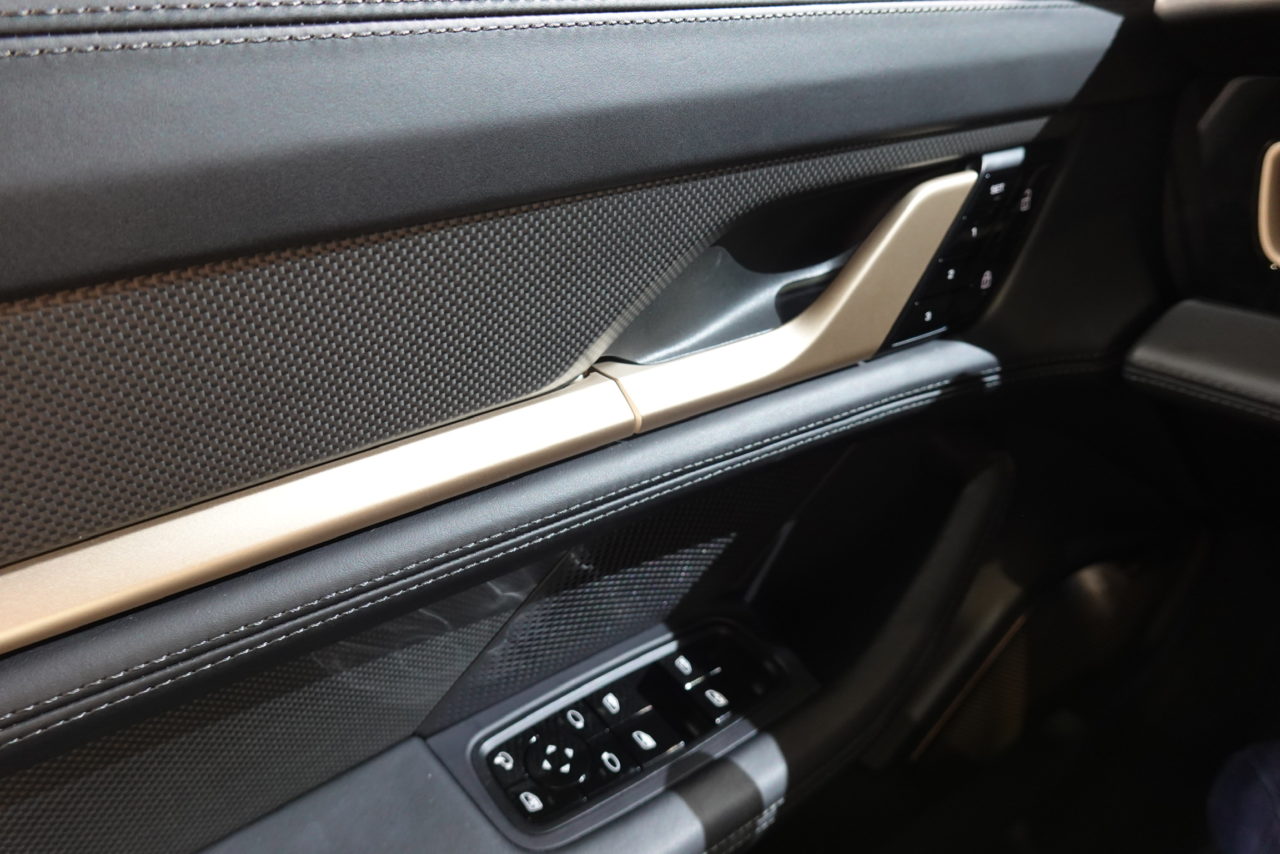
When I said, “The gold looks really cool!,” Alex explained:
The Taycan offers an Accent Package. The gold-looking accents are actually a color called Neodymium, which is applied to the cup holder rings, door parts, air vents, and other areas to add a stylish design accent.
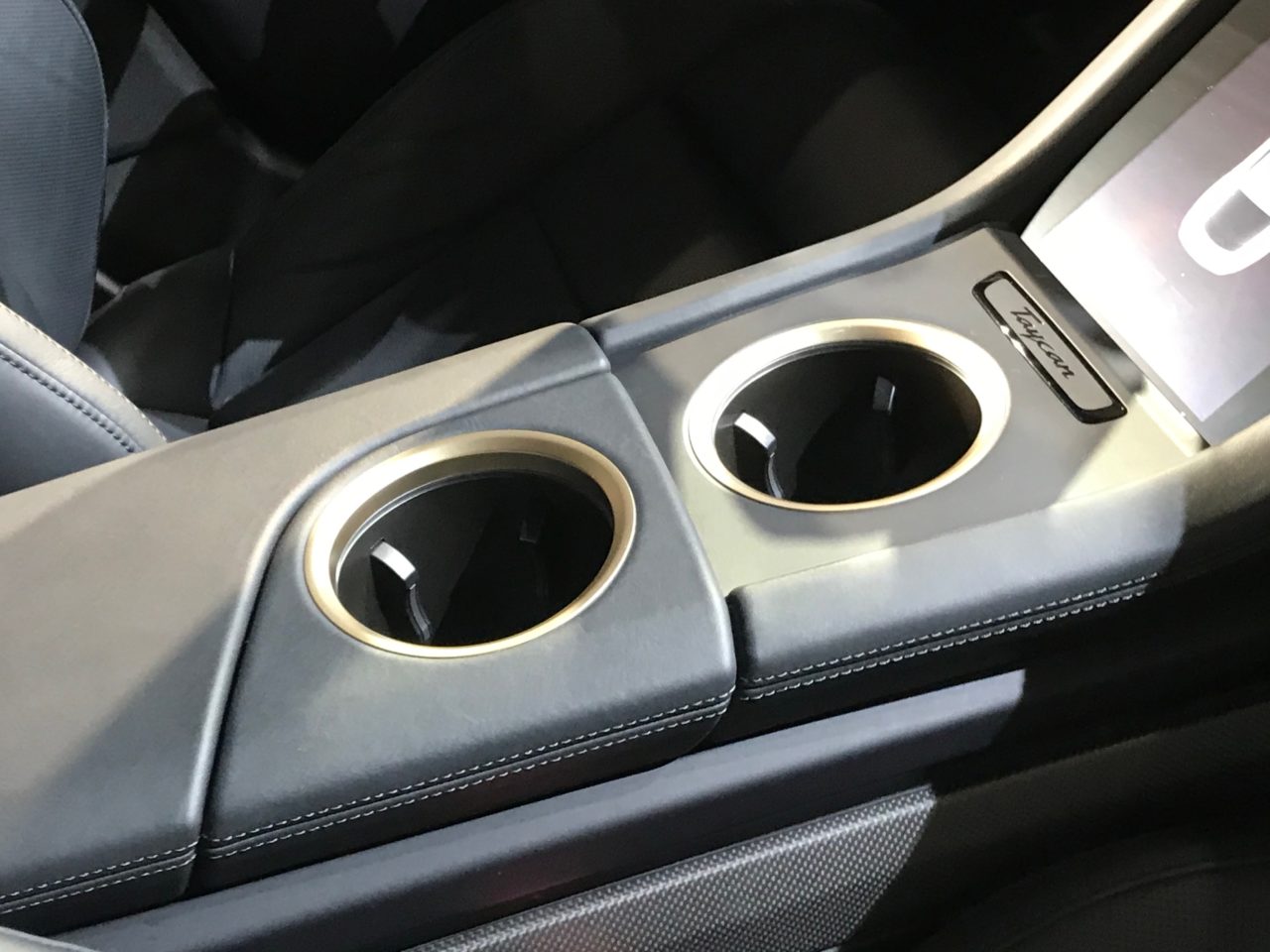
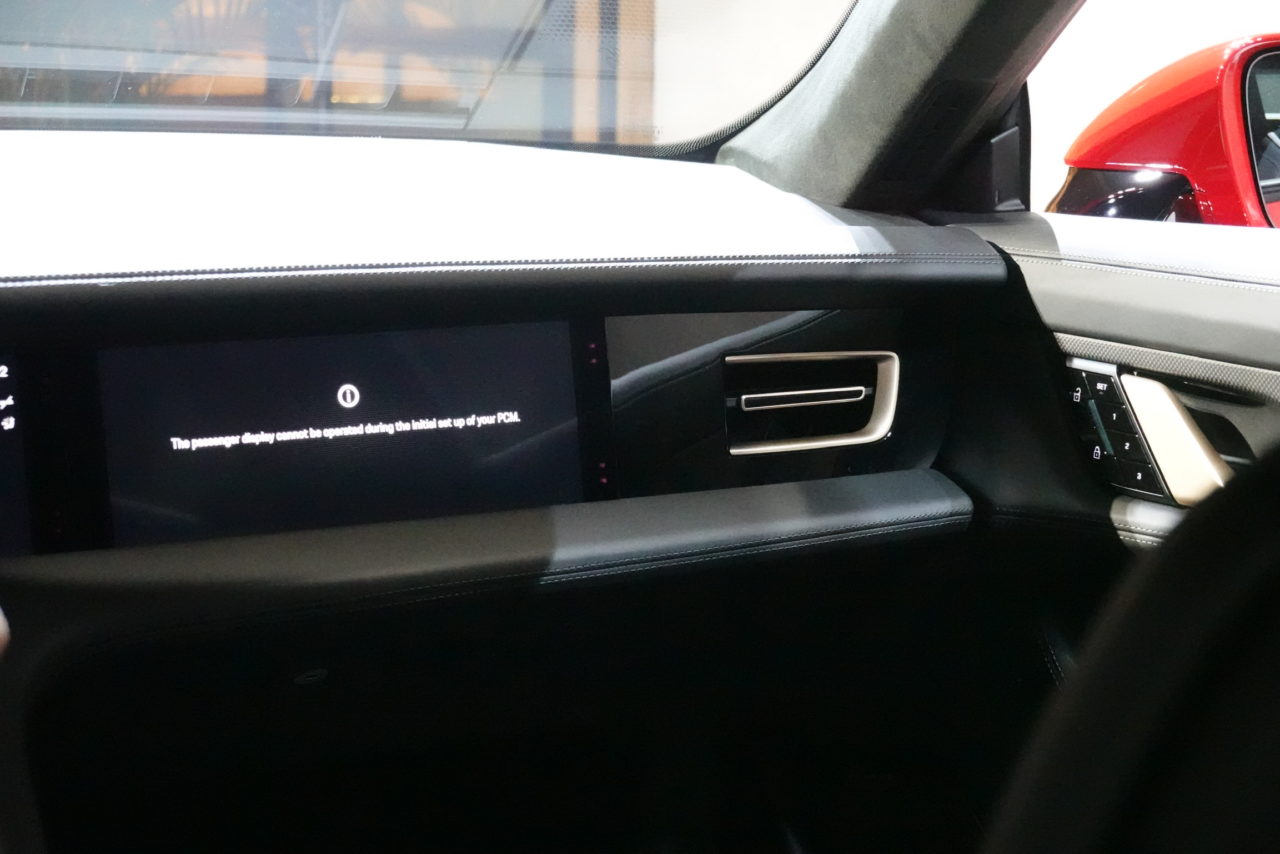
Rear Seats
Compared to the Panamera, the rear seats feel honestly a bit tight. The Panamera’s rear seats offer more legroom.
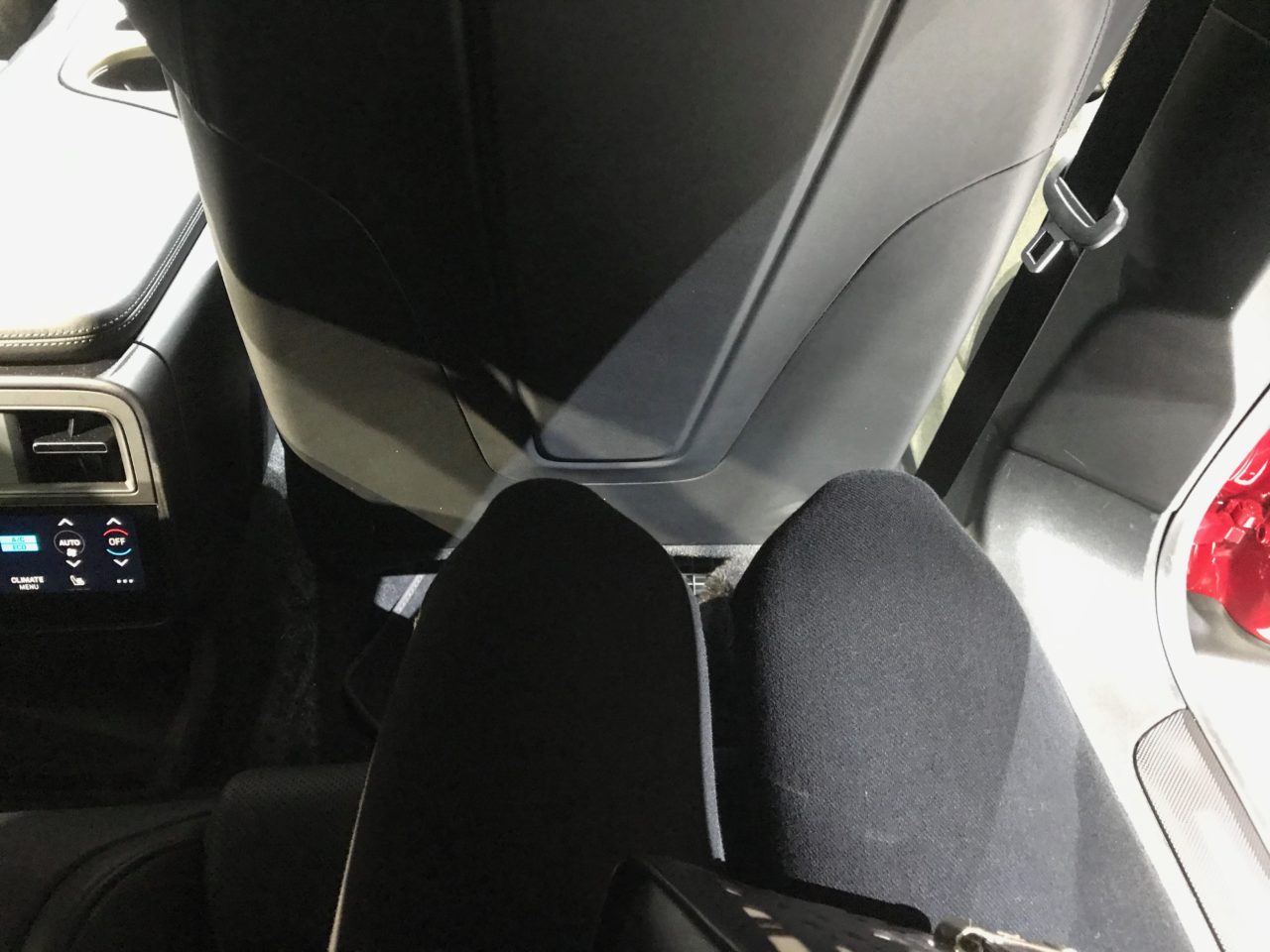
However, the ceiling is higher than it looks from outside. My husband, who is 178 cm tall, said, “It feels a bit enclosed, but it’s totally fine.”
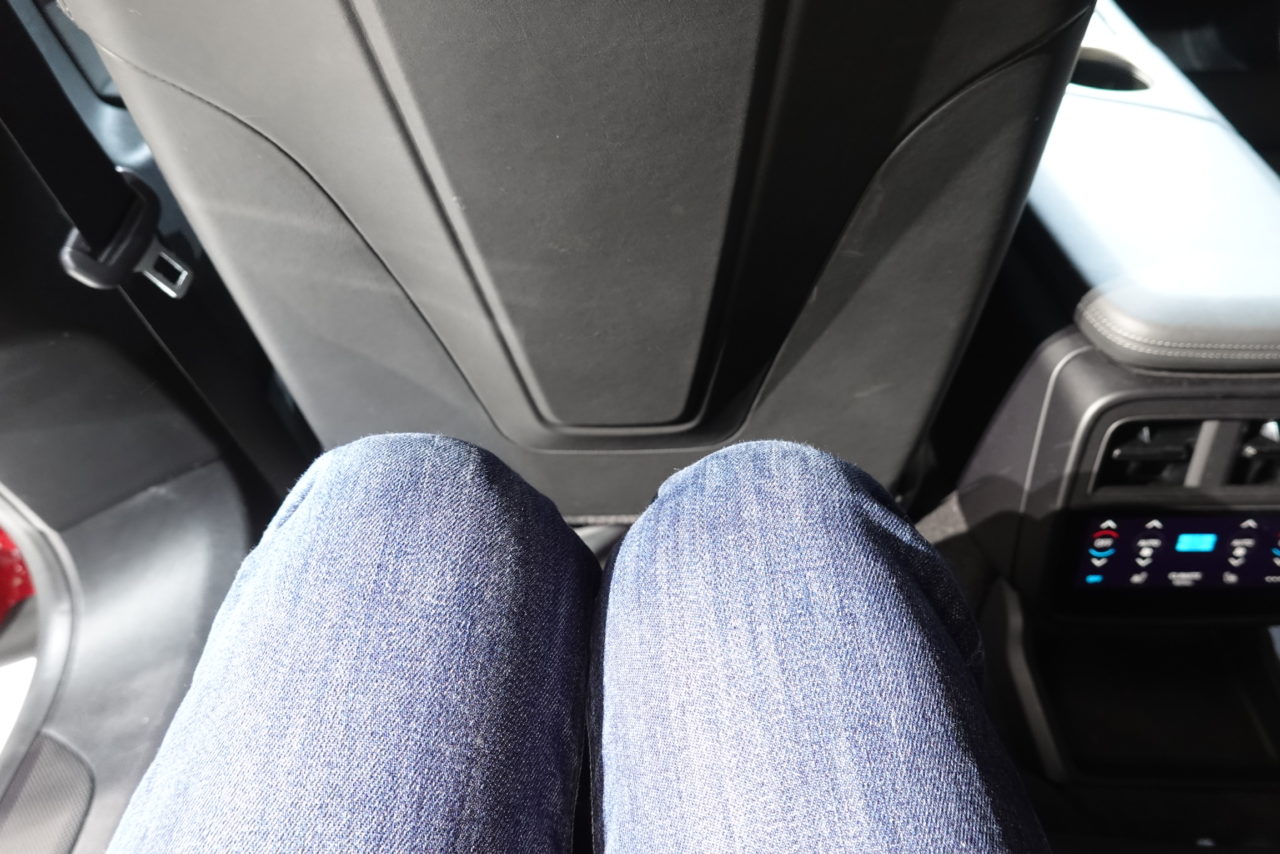
When I asked Alex about his height, he said, “I’m 181 cm tall. Not 180 cm, but 181 cm. That 1 cm is important! Haha.” He actually spent about an hour riding in the rear seat and said he didn’t feel tired at all.
He explained the reason:
Because electric vehicles have their motors mounted low under the vehicle, rear seats tend to be shallow. However, the Taycan cleverly lowers the floor position to allow more legroom, making the rear seats comfortable.
I see! Since I have short legs, it’s no problem for me (lol), but I think it’s amazing that such attention to detail went into the design.
Trunk and Cargo Capacity
My first impression when opening the Taycan’s trunk was that it’s smaller than the Panamera’s. (Sorry for always comparing it to the Panamera!) The depth seems decent, but the height is limited.
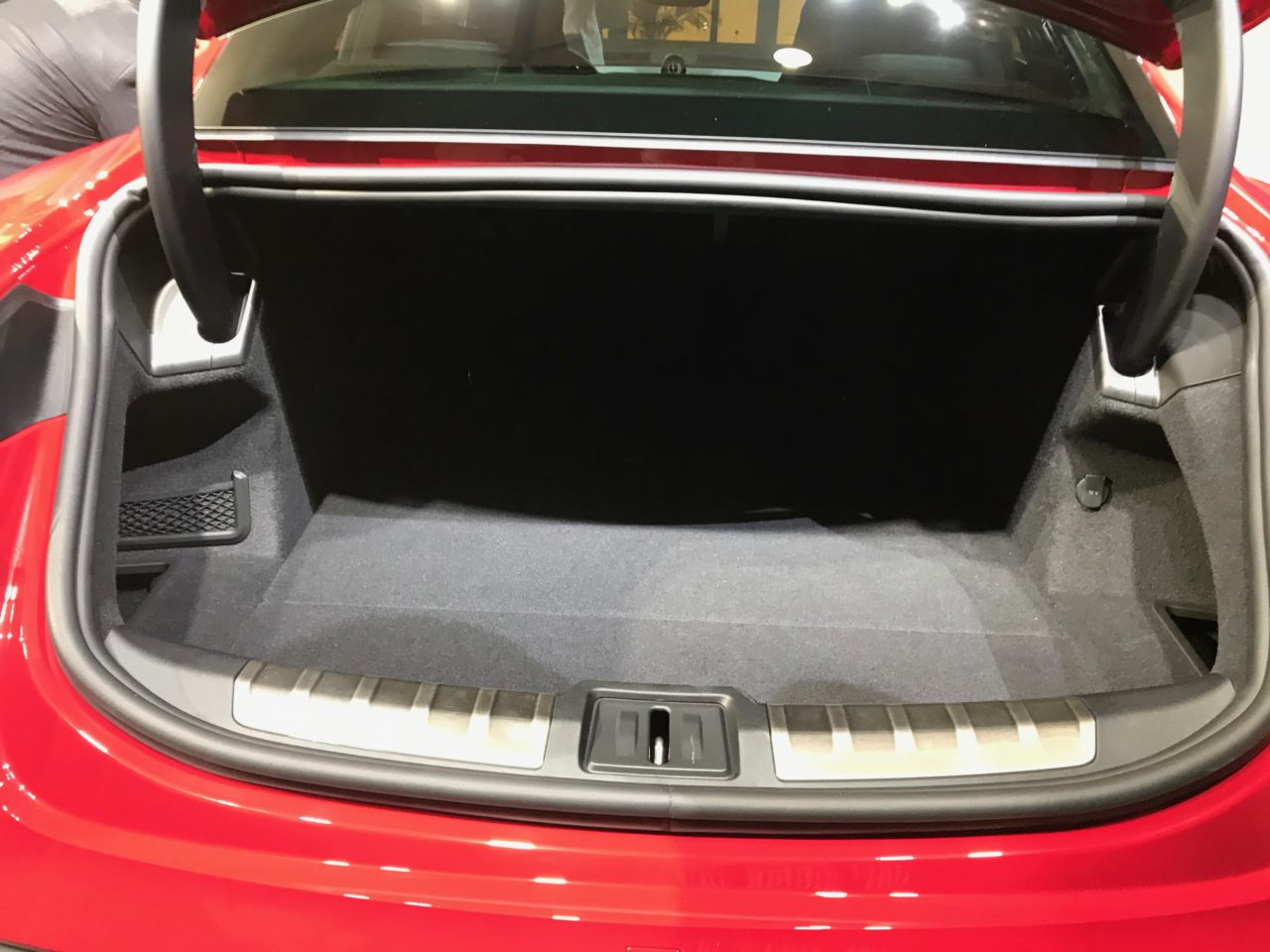
According to the catalog, the Taycan Turbo’s rear trunk capacity is 366L (Taycan 4S is 407L), which is smaller than the Panamera Turbo’s 500L trunk.
However, the Taycan also has a front trunk. Since the Taycan doesn’t have an engine, it can offer trunks both front and rear.
I thought, “That’s amazing!” and asked Alex to open the front hood wide…
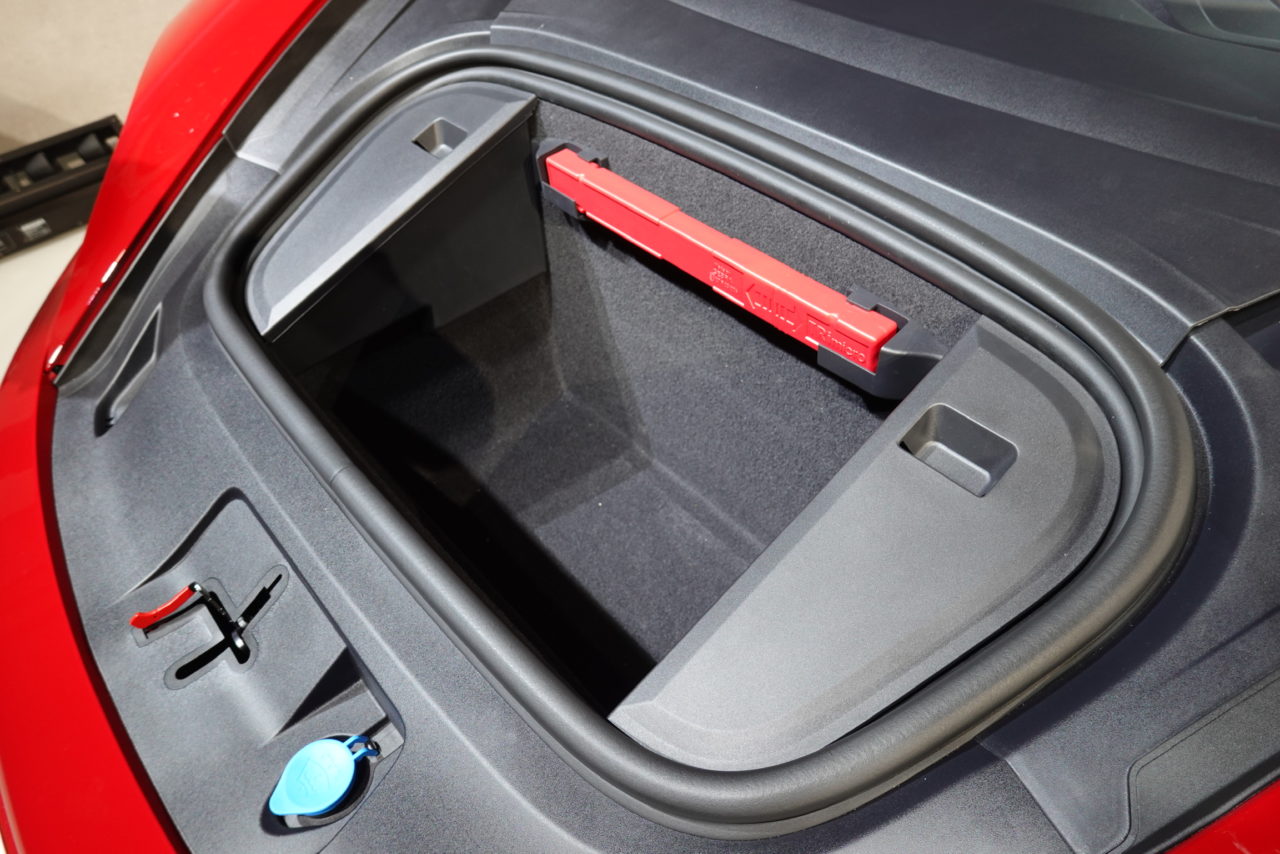
…Oh, it’s smaller than I expected…(*_*) lol
The capacity is 81L. I tried putting in my bag, which just barely doesn’t fit a 13.3-inch MacBook Air, and it looked like this.
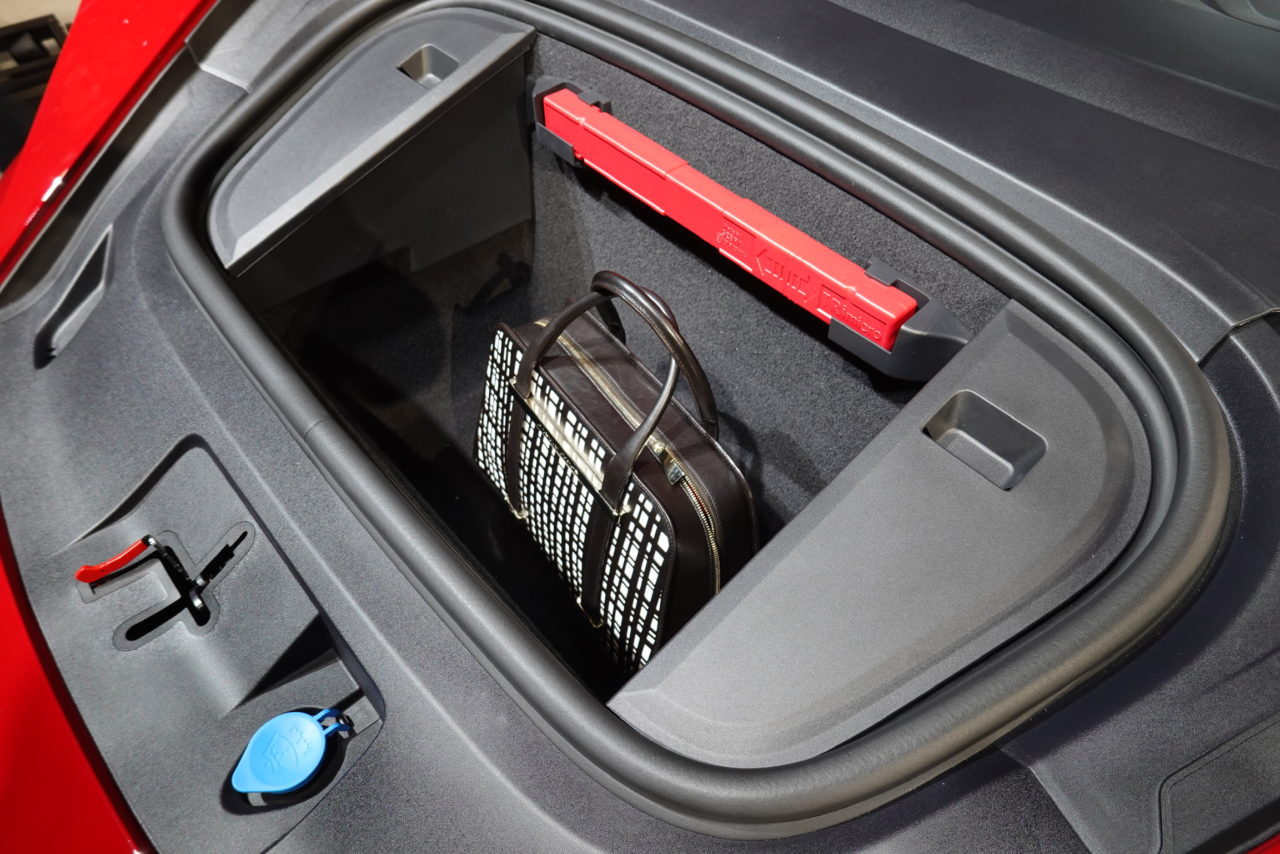
By the way, opening the lids on both sides reveals small compartments suitable for basic car wash supplies.
That’s it for the detailed Porsche Taycan review – Interior Edition. Next time, I’ll cover the motor and brakes.
このブログが気に入ったらフォローしてね!


Comment ( 0 )
Trackbacks are closed.
No comments yet.